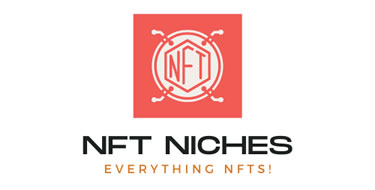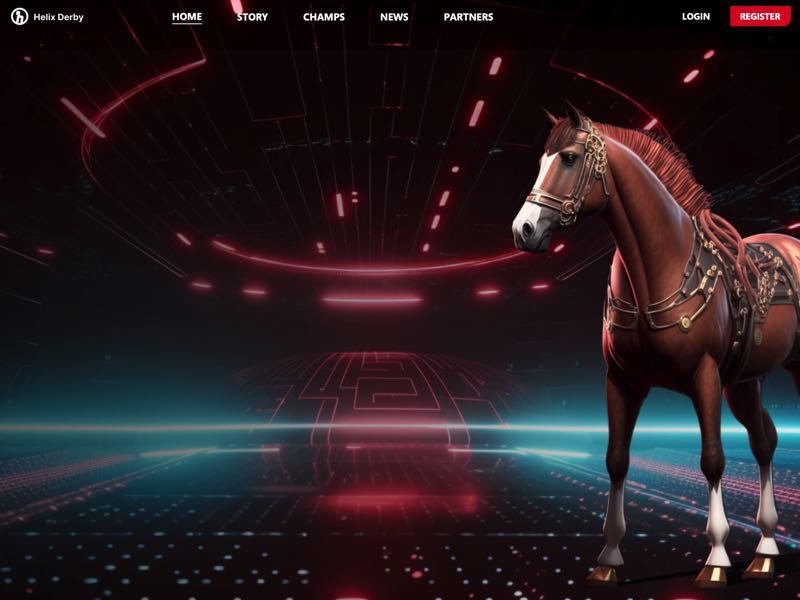The world of Non-Fungible Tokens feels as though it is made for various enterprises to try their luck, seeing how they get on. Sorare is a good example of one that feels as though it’s been generally successful, with the mix of fantasy football and NFTs, using them as something akin to playing cards in the old model of collectibles, being example of a success. An example of a failure could be the OmniHorse project, which was launched as something that would bring the horse racing industry into the modern era, only for it to quietly change its approach to that of gaming when it became clear that it wasn’t going to work in any meaningful way.
Originally the brainchild of Kia Joorabchian, it was hoped that it would completely change the way that the public interacted with horse racing, with some even believing that it would bring in huge sums of money to the industry. In the end, though, it was re-branded to become ‘Helix Derby’, focussing on the world of online gaming rather than Non-Fungible Tokens. It was felt by Joorabchian and his advisers that gaming was a safer bet and more reliable than NFTs, but for those that had already invested in the OmniHorse project, where did it leave them? It was an ambitious project, but does its failure spell trouble for NFTs in general?
What Was OmniHorse?
 The reality of horse racing as an industry is that it is linked with older generations. It is a sport that has struggled to attract younger people, particularly in an era of cruelty to animals and increased vegetarianism taking centerstage. It was with this in mind that Kia Joorabchian began to investigate the possibility of mixing horse racing with Non-Fungible Tokens, believing that it was a way to attract younger, more tech-savvy audiences to the world of horse racing. He himself was already involved in racing as the owner of Amo Racing, wanting to develop a concept for horse racing similar to the way in which people ‘bought’ football players using blockchain technology.
The reality of horse racing as an industry is that it is linked with older generations. It is a sport that has struggled to attract younger people, particularly in an era of cruelty to animals and increased vegetarianism taking centerstage. It was with this in mind that Kia Joorabchian began to investigate the possibility of mixing horse racing with Non-Fungible Tokens, believing that it was a way to attract younger, more tech-savvy audiences to the world of horse racing. He himself was already involved in racing as the owner of Amo Racing, wanting to develop a concept for horse racing similar to the way in which people ‘bought’ football players using blockchain technology.
The result was OmniHorse, which was an NFT project that promised people an owner-like experience of racehorses. The aim was the bridge the traditional nature of horse racing with the emerging MetaVerse, with OmniHorse NFTs being based on real-life horses that were part of Joorabchian’s stable. Owners would earn crypto tokens based on how the horse performed in the real world, with ‘exclusive benefits,’ such as VIP entrance to racecourses where the horse was running. It was also hoped that by linking the NFT to a horse, with its value increasing and decreasing depending on the horse’s performance, it would be a lot less volatile than other forms of NFTs.
Re-Branding as Helix Derby
 Initially, things seemed to work well for OmniHorse. People invested in the NFTs and the link between the old world of horse racing and the new world of Non-Fungible Tokens looked as if Kia Joorabchian’s dream of 2,000 horses worth $1 billion was on track. Over time, however, the blockchain-focused start-up struggled as people lost interest and what it promised wasn’t really delivered. As a result, a decision was made to pivot away from the volatile world of NFTs and to instead focus on gaming. It wasn’t a complete abandonment of the future, however, with Artificial Intelligence being used for the new project.
Initially, things seemed to work well for OmniHorse. People invested in the NFTs and the link between the old world of horse racing and the new world of Non-Fungible Tokens looked as if Kia Joorabchian’s dream of 2,000 horses worth $1 billion was on track. Over time, however, the blockchain-focused start-up struggled as people lost interest and what it promised wasn’t really delivered. As a result, a decision was made to pivot away from the volatile world of NFTs and to instead focus on gaming. It wasn’t a complete abandonment of the future, however, with Artificial Intelligence being used for the new project.
Helix Derby was launched as a ‘revolutionary AI-Driven horse racing game’, promising users that it would ‘redefine the digital racing arena’. One of the key aspects of Helix Derby is the use of Artificial Intelligence, with proprietary algorithms calculating race outcomes in meticulous fashion, making sure that each race is both dynamic and unpredictable. It means that strategies are just as just as important as picking the right jockey and horse combination, with each ‘thoroughbred’ featuring the DNA of historical horses, converting them into modern champions, promising a fusion of the past and the present.
Is It Just Gambling?
The more you read about the re-brand to Helix Derby, the more it seems as if the new-look project is just another form of gambling. Though it is entirely gamified, with users having the ability to train horses and devise strategies for the races, the reality is that it seems a lot like AI-driven gambling. In fact, there is even ‘high-stakes wagering’ as part of the process, allowing users to place bets and challenge their friends, meaning that those who don’t like to gamble should be wary of getting too involved. With prizes up for grabs and rewards to ‘loyal’ customers, it certainly seems as though it is driven by gambling more than anything.
All of that being said, the company’s Twitter page says, “Helix Derby is a AI skill based simulation horse racing game that utilizes legendary thoroughbred champions from past, to deliver a thrilling experience.” In other words, not explicitly about gambling. Certainly there is no reference to it on the United Kingdom Gambling Commission’s website, so you might want to be careful before investing too much money in playing it. NFTs are obviously a gamble all of their own, given the manner in which your money can be lost quickly in a volatile market, but Helix Derby seems like something else entirely that still has links to the crypto currency world.






